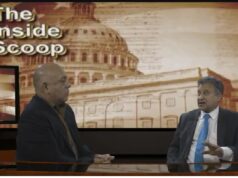h/t to the Daily Press/Katherine Hafner of the Virginian-Pilot for picking up this story.
Over the past two decades in Virginia, rising child care costs have outpaced the average woman’s wage growth by more than seven times. Meanwhile, the gap between what men and women earn in the commonwealth has narrowed by only 4 cents.
Those are some of the key findings in a new report from the National Women’s Law Center, which deemed Virginia a “priority state” leading up to the 2020 election, said Julie Kohler, lead author of the report.
The report, “FROM SHORTCHANGED TO EMPOWERED: A Pathway for Improving Women’s Well-Being in Virginia,” is excellent, and I definitely recommend that everyone check out the whole thing. For now, here are a few more highlights (bolding added by me for emphasis):
- “Women are animating politics and setting the stage for important policy discussions in Virginia and across the country – both in the lead-up to the 2020 election and beyond.”
- “This is particularly true for women of color, who comprise a growing percentage of the state’s overall population (19 percent of adults age 18 and up in 2017, up from 15 percent in 2001), are leading prominent advocacy efforts, and are playing a determinative role in election outcomes.”
- “And yet women and girls in Virginia and across the country – especially women and girls of color – continue to face barriers to opportunity, equity, and economic security in all areas of their lives: health, work, and family”
- “We find a decidedly mixed environment facing women [in Virginia], one that requires public policy solutions and the commitment of leaders in Virginia – and nationally – to address”
- For instance: “Over the past 20 years, Virginia’s gender wage gap has narrowed by only four cents, with women today being paid only 81 cents to every dollar paid to men.“
- And: “At the same time, child care costs have risen by more than 37 to 39 percent in real dollars over the past decade, outpacing the typical Virginia woman’s wage growth (five percent) by more than seven times. “
- “Despite the MeToo movement, the Virginia legislature has failed to pass most of the myriad bills introduced to address sexual harassment and other forms of discrimination, like pay and pregnancy discrimination, that occur alongside and further entrench harassment.” (Note: this is 100% due to Virginia REPUBLICANS, as Democrats have overwhelmingly supported such bills)
- “And women have limited access to full reproductive health care in Virginia, with 80 percent of Virginia women living in counties without a clinic that performs abortions.”
- In 2016-2018, “White women were 38 to 39 percent of Virginia voters, and women of color were 15 to 16 percent. Of women of color voters in Virginia, two-thirds are Black, 15 to 16 percent are Latinx, 15 to 16 percent are Asian American, one percent are Native, and one percent identify as ‘other.'”
- “Women of color are the strongest Democratic voting bloc, in Virginia and nationally, supporting Democratic top-of-ticket candidates at rates of 89 to 90 percent over the last three years. In contrast, white women’s support for Democratic top-of-ticket candidates ranged from 50 to 54 percent in the 2016–2018 elections; men of color supported Democratic candidates at rates of 80 to 82 percent and white men at rates of 35 to 44 percent.”
- “If women had not voted in 2016 and 2017, Donald Trump and Republican gubernatorial candidate Ed Gillespie would have prevailed in the state over Hillary Clinton and Ralph Northam, respectively. The same is true if only men and white women had voted both years.” (No question, 2017 and 2018 here in Virginia were both the “year of the woman,” although only on the Democratic side…Republican politicians are overwhelmingly male. Now, time for another “year of the woman” in 2019 – and 2020, 2021, etc!)
- “Women now make up 26.4 percent of the state legislature (up from 19.3 percent in 2017) and 23 percent of the state’s congressional delegation (up from 8 percent in 2016). Despite these gains, none of the state’s three executive seats are currently held by women.” (Two points: 1) given their share of the population, women should make up around half of the legislature and congressional delegation; 2) the under-representation of women is overwhelmingly a problem of Republicans, although Democrats still have some work to do as well on this front.)
- “Sexual harassment and assault took on new prominence in Virginia in early 2019 when two women alleged that Lieutenant Governor Justin Fairfax had sexually assaulted them in the early 2000s. The allegations, which Lt. Governor Fairfax has denied, revealed the need for better protocols for addressing sexual harassment and assault allegations against sitting elected officials – including systems to ensure a full, fair, transparent, independent, and nonpoliticized investigation.”
- “Virginia’s incredibly narrow workplace harassment law covers only a small segment of employers and blocks most victims from going to state court to seek justice, making it difficult to hold employers and individual harassers accountable.”
- “Now, first trimester abortion care is only available in a few urban areas, leaving 92 percent of Virginia’s counties – where 80 percent of all Virginia women reside – without an abortion provider. “













![Video: Sen. Mark Warner Says Last Night, “you saw an angry old man [Trump] giving a partisan screech that doesn’t solve anything”](https://bluevirginia.us/wp-content/uploads/2025/12/warner1218-100x75.jpg)

